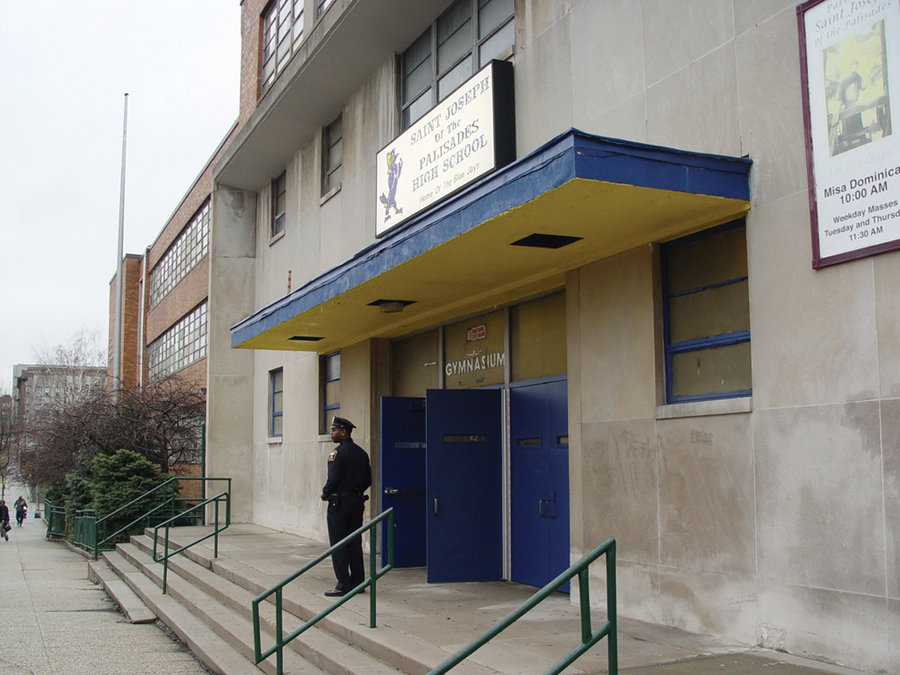In order to solve the dilemma of overcrowding at West New York’s public Memorial High School, the Board of Education plans to purchase the former St. Joseph’s High School, a private school located across the street that closed in 2009.
West New York’s Memorial High School contains approximately 1,800 students. In 2005, the NJSDA determined that the building was equipped to hold 918, leaving them 882 students over capacity.
If purchased, St. Joseph’s would become a “freshman/sophomore academy” and house between 700 and 800 students, school officials said.
“All indications from the SDA and the Department of Education look very encouraging.” – John Fauta
____________
Population growing
The local school population is growing, according to Superintendent John Fauta. Between the new development on the waterfront and the increasing flow of out-priced New Yorkers defaulting across the Hudson, the number of students in the school system is pushing 8,000.
Most of the growth is in the lower grade levels, Fauta said, which guarantees a future increase for the high school.
“We have to hire more teachers to accommodate the increase in numbers,” Fauta said, “but we don’t have the physical space.”
Average class size at the high school is 29 students, which is well above the state average, according to a presentation given by Paul Hamilton of the NJSDA at a West New York Board of Education meeting held in October.
“All indications from the NJSDA and the Department of Education look very encouraging [for the purchase],” Fauta said last week. “We’re moving along properly and through all the appropriate channels and procedures.”
How it came to this
Memorial High School was built in the late 1920s. Additions were constructed in the 1960s and in the 1980s to accommodate West New York’s growing population. But it was not enough.
In April of 2006, the Middle States Association of Colleges and Schools determined that “for a building of this age it is well maintained; however, there are some items of concern.”
These “items” include aging science labs without access to natural gas due to safety issues, lack of storage for supplies and equipment, and general deterioration. Students are required by the state to take and pass lab-dependent courses in order to graduate.
The other main concern, of course, was the overcrowding, which “leads to a potentially hazardous condition,” the report stated.
At first, the town and the NJSDA looked into adding on to Memorial, and they budgeted $28 million for the project. However, total cost for additions and renovations required to meet the needs of the students ran between $60 and $80 million.
This eventually led to the concept of purchasing St. Joseph’s. The private parochial school closed in 2009 because of the faltering economy. The NJDOE and NJSDA deemed the school a viable option for West New York after a walk-through inspection.
According to Hamilton’s research, it provides an ideal solution because of its close proximity to Memorial High School (literally across the street), it will have no impact on surrounding residences like a renovation to the existing structure would, and it makes sense in the long term as the city’s population continues to increase.
‘Learning academies’
The acquisition of St. Joseph’s will not only give space to the excess student population, but it will provide necessary science labs and gym space. It will also allow for an additional cafeteria and provide the swim team with its own pool, eliminating the need to rent.
The additional facilities will allow for the implementation of learning academies – similar to college majors – that students will select in their sophomore year.
These academies will include alternative education, liberal arts, public affairs, business and finance, and visual and performing arts. They would supplement the traditional “core” schedule.
ESL, bilingual, and special needs students would be included.
As for the cost for this project (which will be completely state-funded) and the timeline for its completion, specifics will be revealed when – and if – the NJSDA approves it.
Fauta estimated that the project will be presented for approval either in late December or early January.
Gennarose Pope may be reached at gpope@hudsonreporter.com
